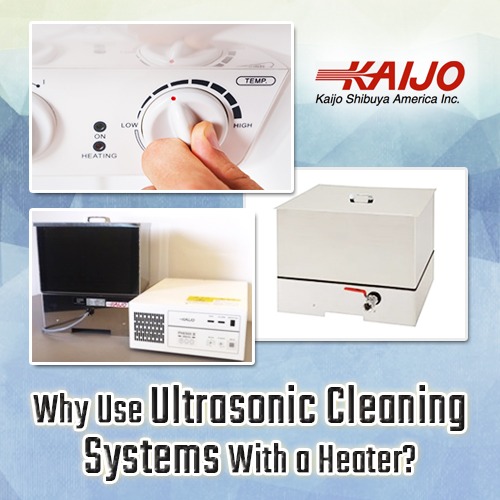Why Use Ultrasonic Cleaning Systems with a Heater?
January 30, 2018

Ultrasonic cleaning systems can remove a wide variety of contaminants from the surfaces of parts to be cleaned, but specific material types can be removed more quickly and completely with additional measures. Oil-based dirt, grease and organic compounds can take the form of hard deposits that are difficult for the cavitation bubbles of the ultrasonic system to attack. The cleaning action of the bubbles will eventually break up and remove such material, but the process is more time-consuming than for other types of dirt.
In such cases heating the ultrasonic cleaning solution helps speed up the cleaning process. The hot liquid softens the deposits and makes it easier for the ultrasonic cleaning action to take place. Often a mild detergent is added as well to dissolve some of the contaminants. Cleaning with a heated solution is an effective way of making the ultrasonic cleaning system perform efficiently and at full capacity.
How Heat Improves Performance
The performance of ultrasonic cleaning systems depends on correctly matching the system to the characteristics of the parts to be cleaned and the materials to be removed. Robust parts such as metal automotive components can often be cleaned in a plain water bath using the strong cleaning action of the lower frequencies of ultrasonic systems. More delicate parts such as semiconductor wafers need the softer cleaning action provided by higher frequencies. If the material to be removed from such fragile parts is extensive and hardened, additional measures improve ultrasonic cleaning performance.
Depending on the contaminants to be removed, mild detergents and heat can be applied. The detergent and heat combination can be tailored to the particular material and an appropriate selection can improve cleaning performance substantially. Typically, contaminants are made up of several components and the detergent increases the solubility of some of them while heat softens the material and increases the effectiveness of the detergent. For the delicate cleaning of higher frequencies, the bubbles are smaller and less energetic. This lower energy is often not enough to remove hard materials quickly, but once heat has softened the material and the detergent has dissolved some of the bonds keeping the dirt in place, the small bubbles can clean quickly and completely.
Heating the Ultrasonic Bath
Ultrasonic cleaning systems are made up of ultrasonic generators, transducers and tanks. The ultrasonic generators produce the ultrasonic electrical signal and are selected based on the frequency needed for the cleaning application. The transducers are mounted in the bath immersed in the cleaning solution and they have to be matched to work with the selected generator. Both can be designed for a single or a range of frequencies
For the tanks, the only requirement is that they have to be large enough to hold the parts to be cleaned. If the parts are to be held in a basket to keep them away from the bottom and sides of the tank and avoid damage from vibrations, the tank has to be big enough to accommodate the basket.
For cleaning applications requiring heat, both the transducers and the tank must be designed for a heated cleaning solution. While cleaning applications may require different temperatures for optimal cleaning, a typical temperature may be around 80 degrees centigrade (176 degrees Fahrenheit).
Kaijo’s ultrasonic cleaning systems can accommodate such heating requirements and the company can help customers select suitable equipment and systems from their complete line of ultrasonic products. The transducers and tanks are heat-resistant up to 100 degrees centigrade (212 degrees Fahrenheit) and Kaijo’s customer support team can help determine what combination of detergent and heating is ideal for specific customer’s cleaning applications.





